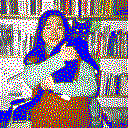Towards the posthuman idea of race as a viscous assemblage.
The case studies of melanin and MSG.
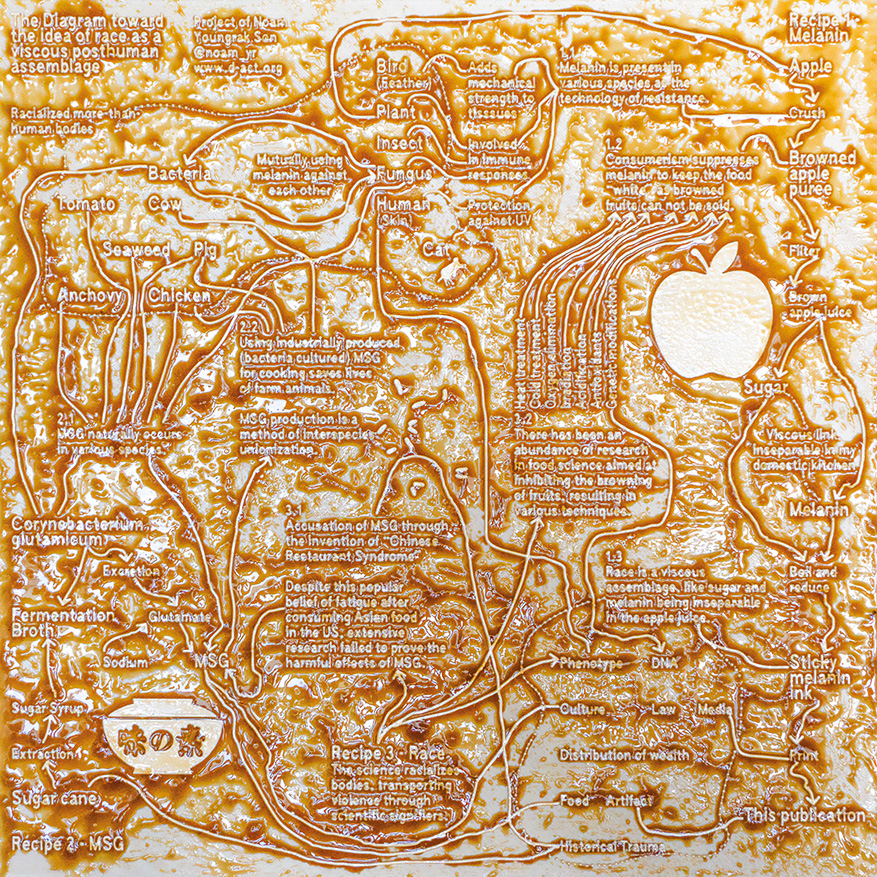
The diagram towards the idea of race as a viscous posthuman assemblage
A 15 min talk about the work
By considering human agency as interdependency, posthumanist teaching has distributed human subjectivity through entanglement with various more-than-human bodies. If so, what happens to important political concepts such as race? In this research project, I have explored how the idea of race can be meaningfully extended into a more-than-human status.
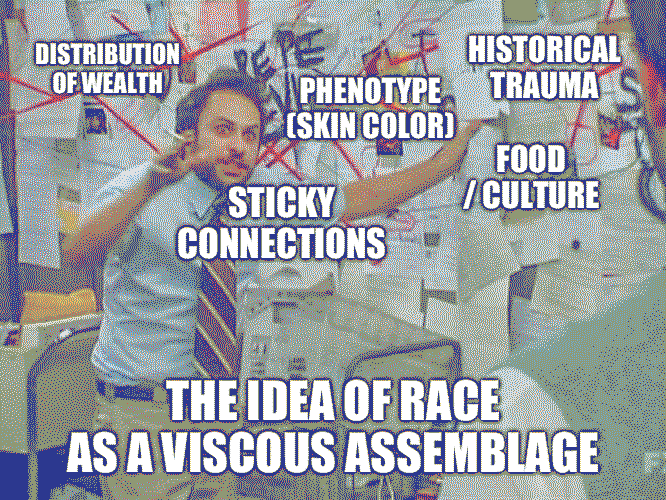
The understanding of race as a viscous “chain of contingency” proposed by Arun Saldanha in his text “Reontologising race: the machinic geography of phenotype” was especially important in this project. Race, according to Saldanha, is “sticky connections” between various “constituent components” such as “strands of DNA, phenotypical variation, discursive practices (law, media, science), artifacts such as clothes and food, and the distribution of wealth”. The aim of the project is to stretch this viscous assemblage through the entanglement of interspecies interdependency and imagine the posthuman idea of race.
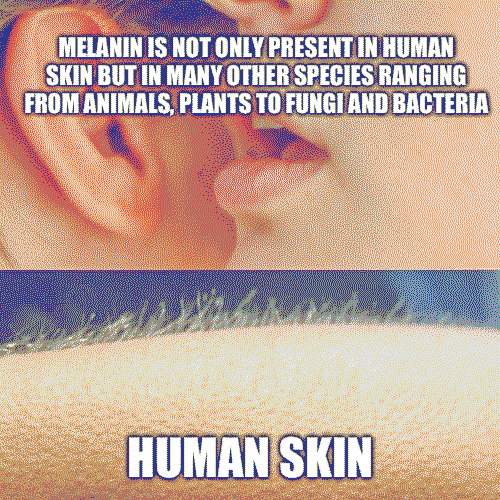
The entry point for this exploration is melanin, the pigment widely known to be present in human skin and determining skin color. However, it is also present in many other species, including plants. Due to its resilient property as a polymer, melanin works as "the technology of resistance" in various ways. Melanin protects mammal skin including ours from sunburns by absorbing UV, and adds mechanical strength to feathers. Fungi and bacteria produce melanin reciprocally, with fungi releasing it to repel bacteria, and bacteria producing it as a defense against fungi. Although the presence of melanin in plants was long denied, its existence has been recognized relatively recently. A slice of apple turning brown by being exposed to oxygen is an everyday example of occurrence of plant melanin, which protects the apple from the damage.
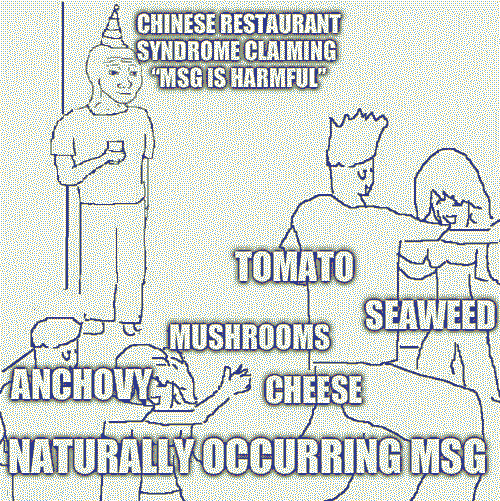
Another case within the scope of this research is MSG. If melanin renders brownness, what molecule represents Asianness? MSG, the flavor enhancer widely used in Asian cuisine, has been unjustly accused as the cause of the so-called "Chinese Restaurant Syndrome." Despite this popular belief, MSG naturally occurs in various species such as tomatoes, anchovies, seaweed, mushrooms, and even humans. MSG was first recognized in 1908 from Kombu, an edible seaweed employed in East Asian cuisine for savory broth. The current industrial production of MSG involves bacteria called Corynebacterium glutamicum, which digests sugar and excretes MSG. Using MSG in cooking can potentially reduce meat consumption, as the same savoriness can be achieved using relatively less meat. This can be seen as a “viscous” means of interspecies unionization between the bacteria and farm animals.
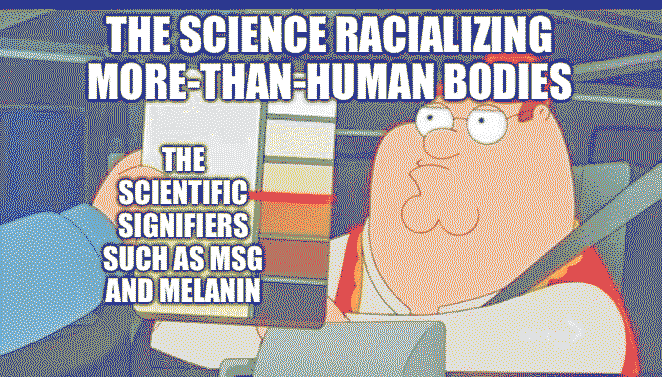
It is "the Science" that racializes nonhuman bodies by transporting violence through scientific signifiers. For instance, the majority of knowledge produced by humans about plant melanin comes from white-consumerist intentions to prevent fruits and vegetables from turning brown, as browned fruits cannot be sold. This resulted in various methods to inhibit browning, including heat treatment, cold treatment, oxygen elimination, irradiation, acidification, antioxidants, and even genetic modifications. This technology is a part of the global assemblage of logistics through which countless racialized and nonhuman bodies are exploited. Similarly, the xenophobic claim of fatigue after consuming Asian food – which has only been reported in the United States – ignited extensive research about the toxicity of MSG yet ironically only concluded in the fact that MSG is safe to the human body. Regardless of its actual harmlessness, the stereotype reproduced by the term "Chinese Restaurant Syndrome" continues to challenge the livelihood of many Asian-run businesses. Both melanin and MSG are associated with certain bodies as markers through which violence can be mobilized. Racialized bodies are oppressed when these molecules are controlled and suppressed. As demonstrated in the case studies, the effects of racialization extend to various nonhuman bodies connected through the molecules they share. This highlights racism as an ecological issue.
I attempted to collect melanin from browned apples in my domestic kitchen. However, using the technology accessible in that environment, melanin was inseparable from other substances in the apples, such as sugar, making the outcome very sticky. This, once again, reminded me of the viscosity of the racial assemblage. I managed to print the diagram based on the concepts described above using the ink.
Explored and materialized during the residency organized by Compass Live Art in 2023.
Memes produced and exhibited during the program Here and Then, Now and There at Heb Bos, Antwerp.

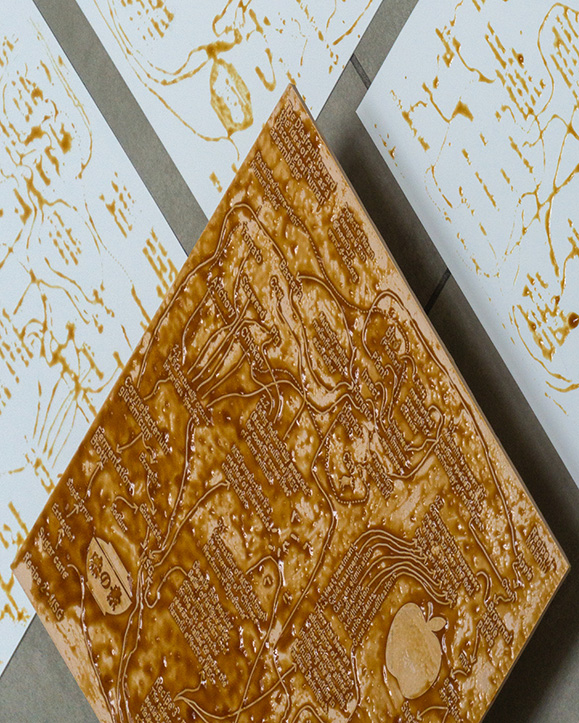
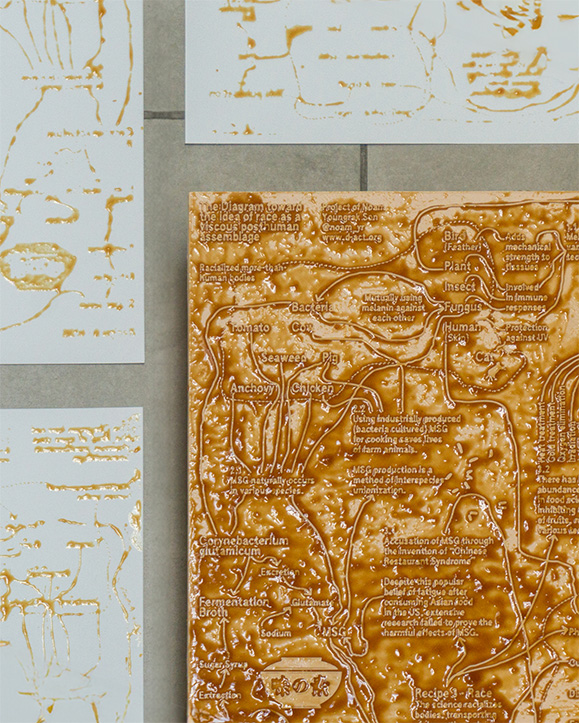
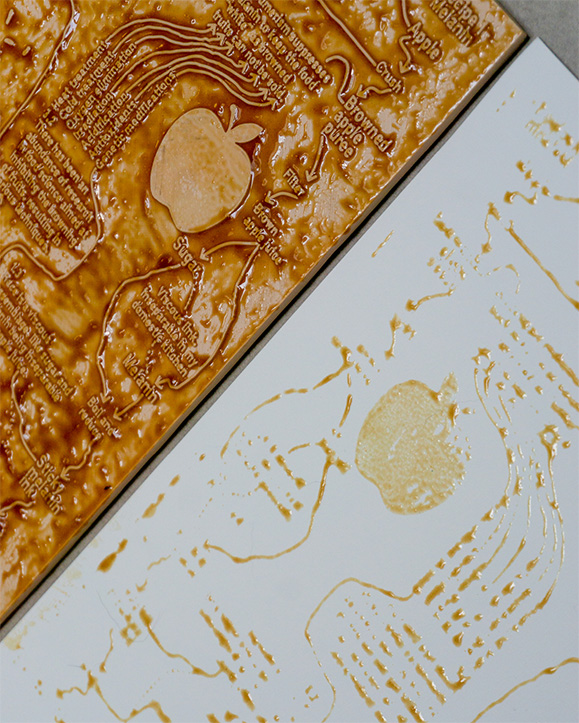
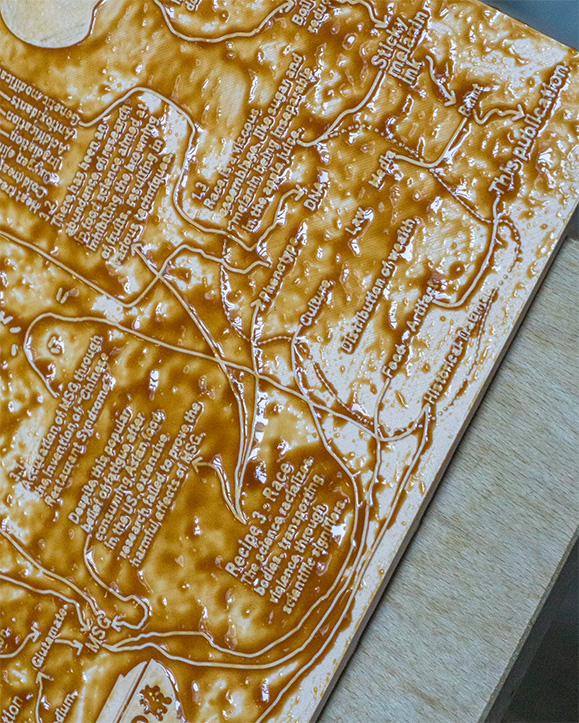
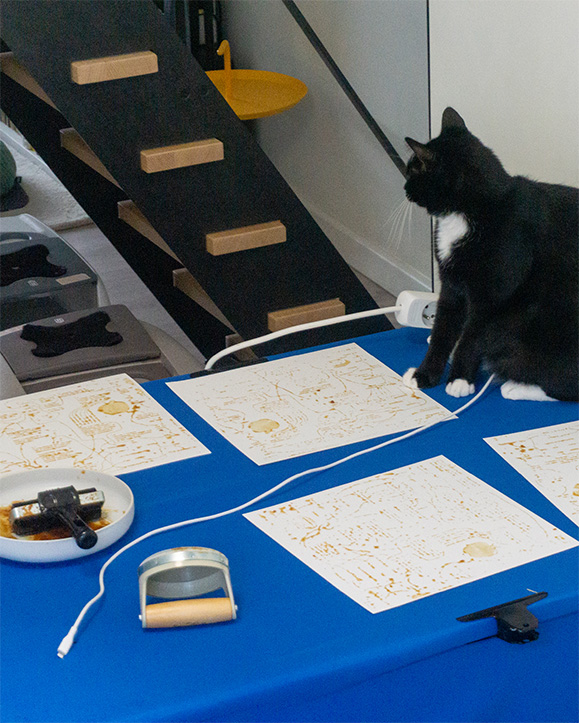

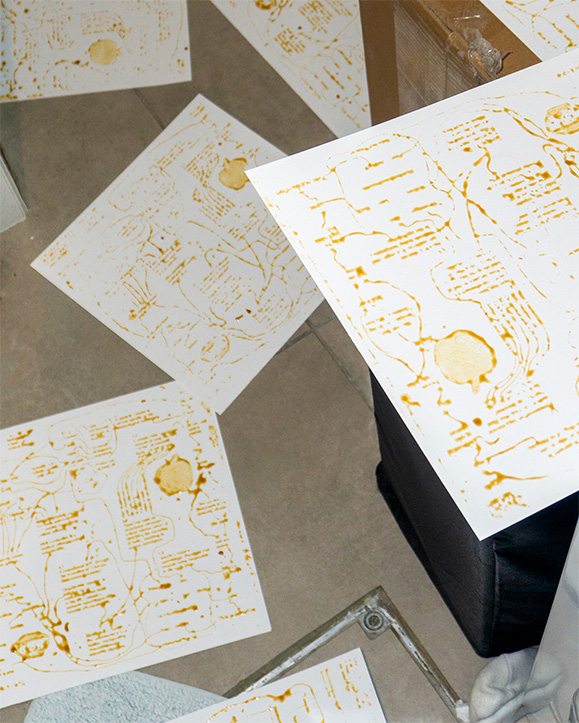

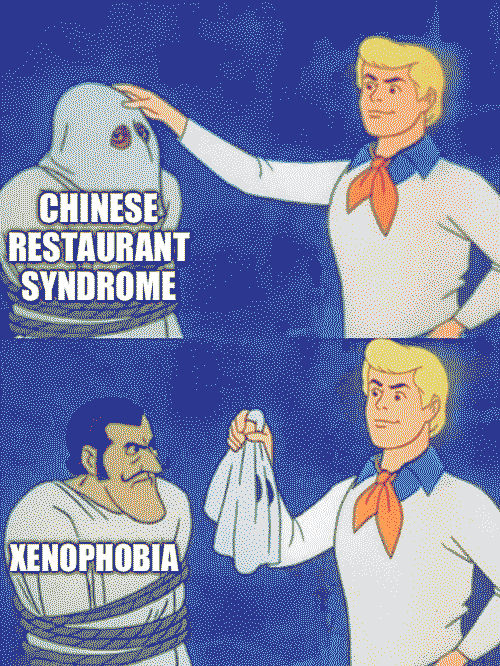

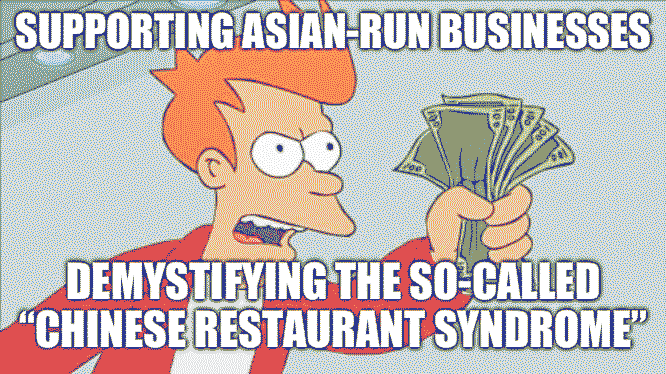
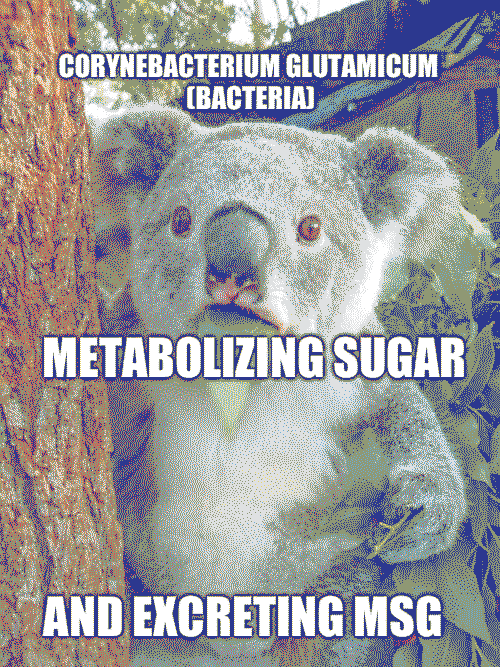
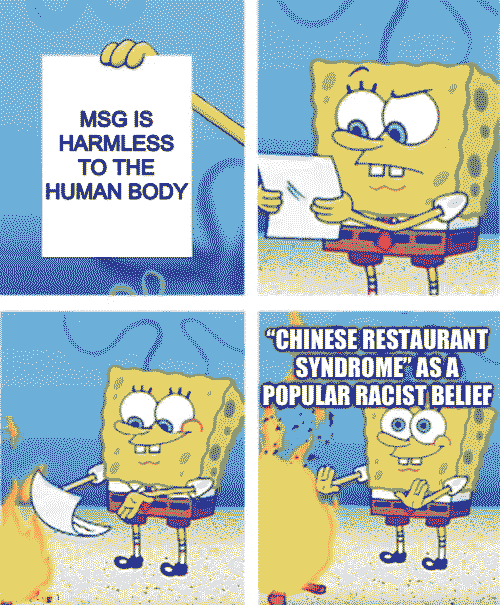

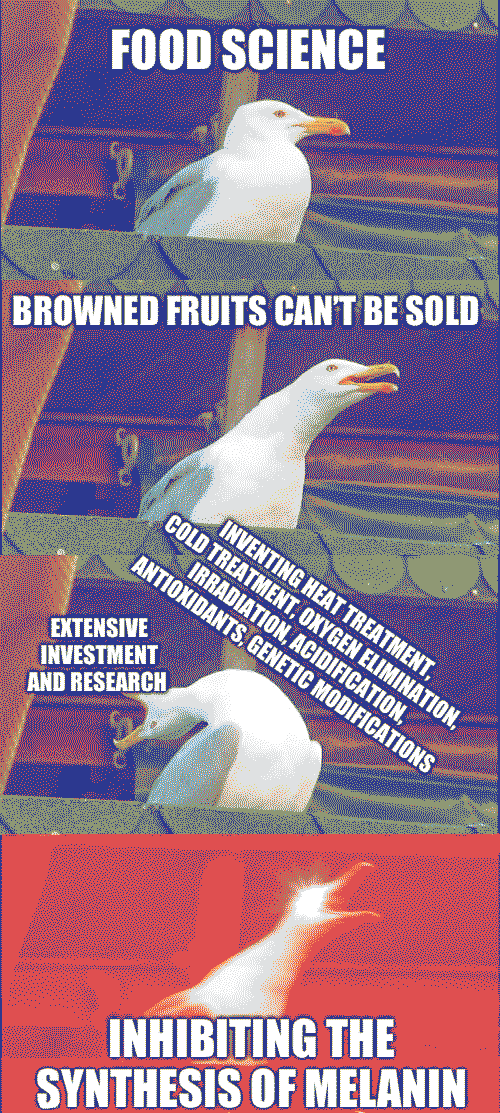
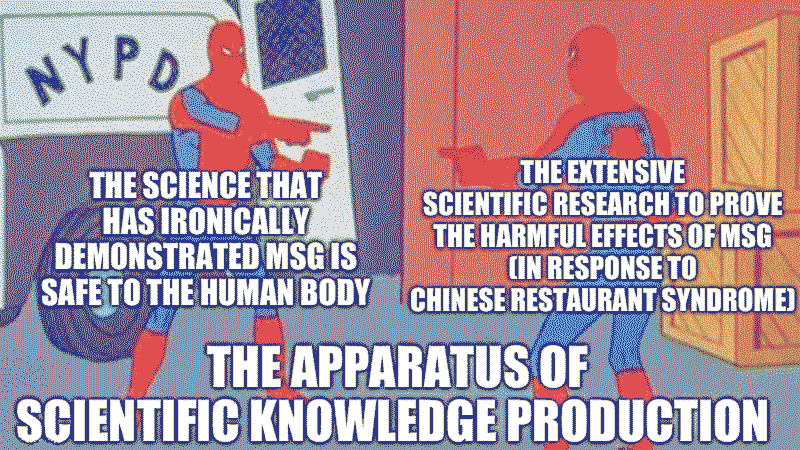
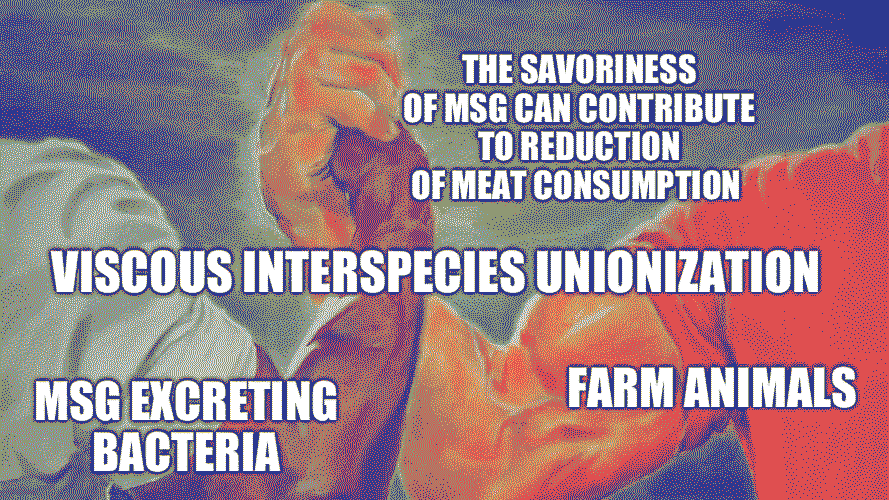
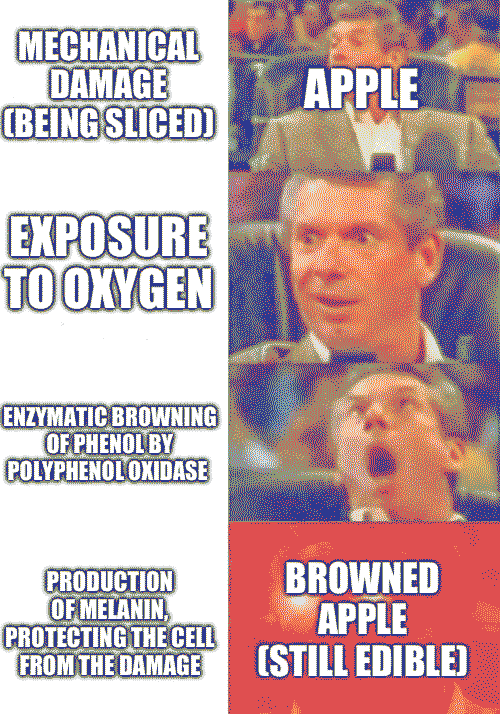


Portfolio - Noam Youngrak Son
For a more visual overview, check my Instagram.
| Image | Title | Category | Year | Notes | Funding |
|---|
Noam Youngrak Son is a communication designer, design theorist, and cultural worker. Their design work encompasses small-scale publishing projects, speculative worldbuilding, workshops, lectures, writing, net art, and occasional performative interventions. As a cultural worker, they have co-organized the Ghent-based queer publishing collective Bebe Books since 2021. Son has expanded their focus from design to theory in order to critically engage with the ontology of the design industry, media, and broader material culture. This turn is informed by their observations of cultural assemblages that echo the extractive operations of capitalism on racialized and more-than-human populations. They are particularly attentive to the interconnected notions of speculation—both as an open artistic approach and as a process of value increase in capitalism. They research the tendency of the former in design to be subjugated by the latter and explore alternative methods for speculative design practices to realize their transindividual potential through collective organization and workshop facilitation. In this process, Son utilizes queer publishing as a technology for mobilizing attention beyond the financialized “scarce resource” of the attention economy. In this context, publishing extends beyond mere printed matter to encompass the maintenance of communities and the cultivation of interspecies relationships. The term "queer" here is not used as a statement of identity but as a process—small yet collective strategies of publishing that challenge the modern myth of the heroic designer.
Subscribe to the newsletter
